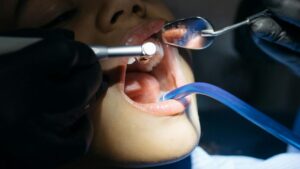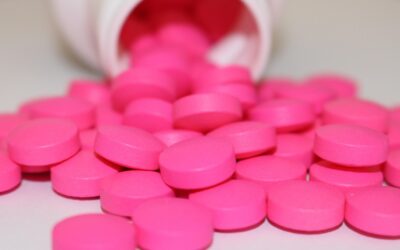Understanding the Role of Amoxicillin in Dental Infections
When a tooth infection strikes, the throbbing pain can feel unbearable — often radiating from your jaw to your entire face. Among the most commonly prescribed antibiotics for such cases is amoxicillin 500mg for tooth infection.
But what makes this antibiotic so effective, and how should you take it safely for best results?
This comprehensive guide explains everything you need to know about amoxicillin 500mg dosage for tooth infection, how it works, how long to take it, and the important safety guidelines to follow.
💡 Note: Always consult your dentist or healthcare provider before taking antibiotics for a tooth infection. Misuse can lead to resistance or incomplete healing.
- Understanding the Role of Amoxicillin in Dental Infections
- What Is Amoxicillin and How Does It Work?
- Why Dentists Prescribe Amoxicillin for Tooth Infections
- Amoxicillin 500mg Dosage for Tooth Infection
- How Long Does It Take for Amoxicillin to Work for Tooth Pain?
- Amoxicillin for Tooth Abscess
- Amoxicillin 500mg for Wisdom Tooth Infections
- Amoxicillin Oral Suspension (Liquid Form)
- Amoxicillin vs. Other Antibiotics for Tooth Infection
- Possible Side Effects of Amoxicillin
- Who Should Avoid Taking Amoxicillin
- Natural Remedies Alongside Amoxicillin (For Faster Relief)
- When to Seek Emergency Dental Care
- Preventing Tooth Infections in the Future
- FAQs
- The Takeaway
What Is Amoxicillin and How Does It Work?
Amoxicillin is a broad-spectrum antibiotic in the penicillin family. It works by killing bacteria responsible for infections in your teeth, gums, and surrounding tissues. Dentists often prescribe it for dental abscesses, gum infections, and infections following wisdom tooth extraction.
Amoxicillin is effective against common bacteria such as:
- Streptococcus mutans
- Staphylococcus aureus
- Peptostreptococcus species
It interferes with bacterial cell wall formation, causing the bacteria to weaken and die.
Why Dentists Prescribe Amoxicillin for Tooth Infections
Tooth infections (also called dental abscesses) occur when bacteria invade the pulp — the inner soft tissue of the tooth. This can happen due to:
- Deep tooth decay
- Cracked or broken teeth
- Gum disease
- Failed dental treatments (like fillings or crowns)
Antibiotics like amoxicillin 500mg help by:
- Stopping bacterial growth
- Reducing inflammation and pain
- Preventing the spread of infection to nearby tissues or the jawbone
🩺 Note: While antibiotics can control the infection, they don’t remove its source. Dental treatment (like a root canal or extraction) is often needed for complete healing.
Amoxicillin 500mg Dosage for Tooth Infection
The standard adult dosage of amoxicillin for tooth infections is typically:
- 500 mg every 8 hours (three times daily), or
- 875 mg every 12 hours (twice daily), depending on the severity of the infection.
Important Dosage Tips
- Take the medicine at the same time every day to maintain consistent blood levels.
- Complete the entire prescribed course (usually 7–10 days), even if the pain subsides early.
- Swallow capsules with a full glass of water.
- Never skip or double doses.
💬 Keep in Mind: Stopping antibiotics too early can allow the infection to return — often stronger and more resistant.
For children, the dosage is based on body weight (mg/kg) and must be determined by a pediatric dentist or physician.
How Long Does It Take for Amoxicillin to Work for Tooth Pain?
Amoxicillin doesn’t relieve pain instantly like painkillers, but it begins fighting bacteria within 24–48 hours.
You may notice:
- Reduced swelling within 2–3 days
- Pain relief in 3–5 days
If you don’t feel improvement after 72 hours, contact your dentist — the infection may involve bacteria resistant to amoxicillin or need drainage/treatment.
Amoxicillin for Tooth Abscess
A tooth abscess is a pocket of pus caused by bacterial infection. It can be dangerous if left untreated, as bacteria can spread to your jaw or even bloodstream.
Amoxicillin 500mg is commonly prescribed for abscesses because it:
- Kills infection-causing bacteria
- Reduces inflammation
- Supports faster healing after dental drainage
However, antibiotics alone cannot burst or drain an abscess.
Professional dental care is essential to remove the pus and prevent recurrence.
Typical treatment plan:
- Amoxicillin 500mg every 8 hours for 7–10 days
- Warm saltwater rinses for symptom relief
- Painkillers like ibuprofen for inflammation
⚠️ Important: Never attempt to pop or drain a tooth abscess yourself. It can spread bacteria deeper into your tissues.
Amoxicillin 500mg for Wisdom Tooth Infections
Wisdom teeth are particularly prone to infection because they are hard to clean and often partially erupted. Food and bacteria can easily get trapped around them, leading to pericoronitis (infection of gum tissue surrounding the tooth).
Dentists frequently prescribe amoxicillin 500mg for such infections to:
- Reduce bacterial load
- Control swelling and discomfort
- Prevent infection from spreading to other molars
You might also be advised to combine antibiotics with:
- Warm saline rinses
- Improved oral hygiene
- Possible extraction if the infection recurs
Amoxicillin Oral Suspension (Liquid Form)
For children or adults who can’t swallow pills, amoxicillin oral suspension is an easy alternative.
It comes in flavored liquid form and is measured using a dosing spoon or syringe for accuracy.
Storage Tip:
Keep it refrigerated and shake well before use. Discard any leftover medicine after 14 days unless advised otherwise.
Amoxicillin vs. Other Antibiotics for Tooth Infection
Sometimes, dentists choose alternatives depending on bacterial type or allergy history.
Here’s how amoxicillin compares:
| Antibiotic | When It’s Used | Common Dosage |
|---|---|---|
| Amoxicillin | First-line treatment for most dental infections | 500mg every 8 hours |
| Clindamycin | For patients allergic to penicillin | 300mg every 6 hours |
| Metronidazole | Combined with amoxicillin for severe abscesses | 400mg every 8 hours |
| Azithromycin | Alternative for resistant infections | 500mg daily |
💡 Note: According to the American Dental Association (ADA), antibiotics should only be used when dental treatment is not immediately available or when there’s a risk of infection spreading.
Possible Side Effects of Amoxicillin
While amoxicillin is generally safe, it may cause mild side effects in some people, such as:
- Nausea or stomach upset
- Diarrhea
- Headache
- Skin rash (allergic reaction)
Serious allergic reactions (anaphylaxis) are rare but require immediate medical attention.
If you experience difficulty breathing, swelling of the face or lips, or severe rash, stop the medication and contact emergency services.
Who Should Avoid Taking Amoxicillin
Avoid taking amoxicillin without consulting your doctor if you:
- Are allergic to penicillin or cephalosporins
- Have liver or kidney disease
- Are taking methotrexate or blood thinners
- Have a history of severe antibiotic reactions
Pregnant or breastfeeding women should consult their dentist or OB/GYN before taking any antibiotic.
Natural Remedies Alongside Amoxicillin (For Faster Relief)
While antibiotics handle the root cause, you can combine natural methods to ease symptoms faster:
- Warm saltwater rinses – reduce inflammation and draw out bacteria
- Cold compress – eases swelling and pain
- Hydration – helps your body flush out toxins
- Avoid sugar and smoking – slows healing
These remedies can support recovery but should never replace prescribed antibiotics or dental care.
When to Seek Emergency Dental Care
Seek urgent dental attention if you experience:
- Severe, persistent pain despite antibiotics
- Swelling that spreads to the face or neck
- Fever or difficulty swallowing
- Pus discharge or foul taste
Such symptoms may indicate that the infection is spreading — requiring drainage, stronger antibiotics, or dental surgery.
Preventing Tooth Infections in the Future
To avoid recurring infections, follow these dental hygiene habits:
- Brush twice daily with fluoride toothpaste.
- Floss daily to remove trapped food.
- Visit your dentist every 6 months for cleanings.
- Avoid sugary foods and drinks.
- Address cavities or cracked teeth promptly.
Prevention is far easier — and far less painful — than treatment.
FAQs
How long should I take amoxicillin 500mg for a tooth infection?
Most dentists prescribe amoxicillin 500mg for 7 to 10 days for tooth infections. You should continue taking it even if the pain improves earlier to ensure the infection is fully cleared. Stopping too soon may cause the bacteria to return or become resistant.
How fast does amoxicillin work for a tooth infection or abscess?
Amoxicillin usually begins to reduce pain and swelling within 24–48 hours, though full recovery may take several days. If symptoms persist after 3 days, contact your dentist — the infection may need drainage or a different antibiotic for better results.
Is amoxicillin 500mg enough for a severe tooth infection?
For mild to moderate infections, amoxicillin 500mg every 8 hours is typically sufficient. However, severe or deep-root abscesses may require a higher dose, such as 875mg every 12 hours, or a combination antibiotic like amoxicillin with clavulanic acid for stronger coverage.
Can I take amoxicillin for wisdom tooth pain or gum infection?
Yes. Dentists often prescribe amoxicillin 500mg for wisdom tooth infections, gum inflammation, or post-extraction swelling. It helps reduce bacterial growth and prevent complications, but professional cleaning or extraction may still be required for full healing.
What’s the difference between amoxicillin and other antibiotics for tooth pain?
Amoxicillin is a first-line antibiotic for most dental infections because it’s safe, effective, and well-tolerated. Alternatives like clindamycin, azithromycin, or metronidazole are prescribed if you’re allergic to penicillin or if the infection doesn’t respond to amoxicillin.
The Takeaway
Amoxicillin 500mg for tooth infection is one of the most effective, dentist-recommended antibiotics for controlling bacterial infections. When taken in the correct dosage and duration, it can help relieve pain, prevent the spread of infection, and support long-term oral health.
💬 Final Tip: Always complete your full course of antibiotics and follow up with proper dental treatment for complete healing.
For further professional guidance, you can visit:
- American Dental Association (ADA)
- Mayo Clinic – Dental Abscess Overview
- WebMD – Tooth Infection Treatments
Disclaimer: The content provided in this article is for educational and informational purposes only. It does not substitute professional medical advice, diagnosis, or treatment. For guidance specific to your dental condition or recovery, please consult your dentist, oral surgeon, or licensed healthcare provider.










0 Comments